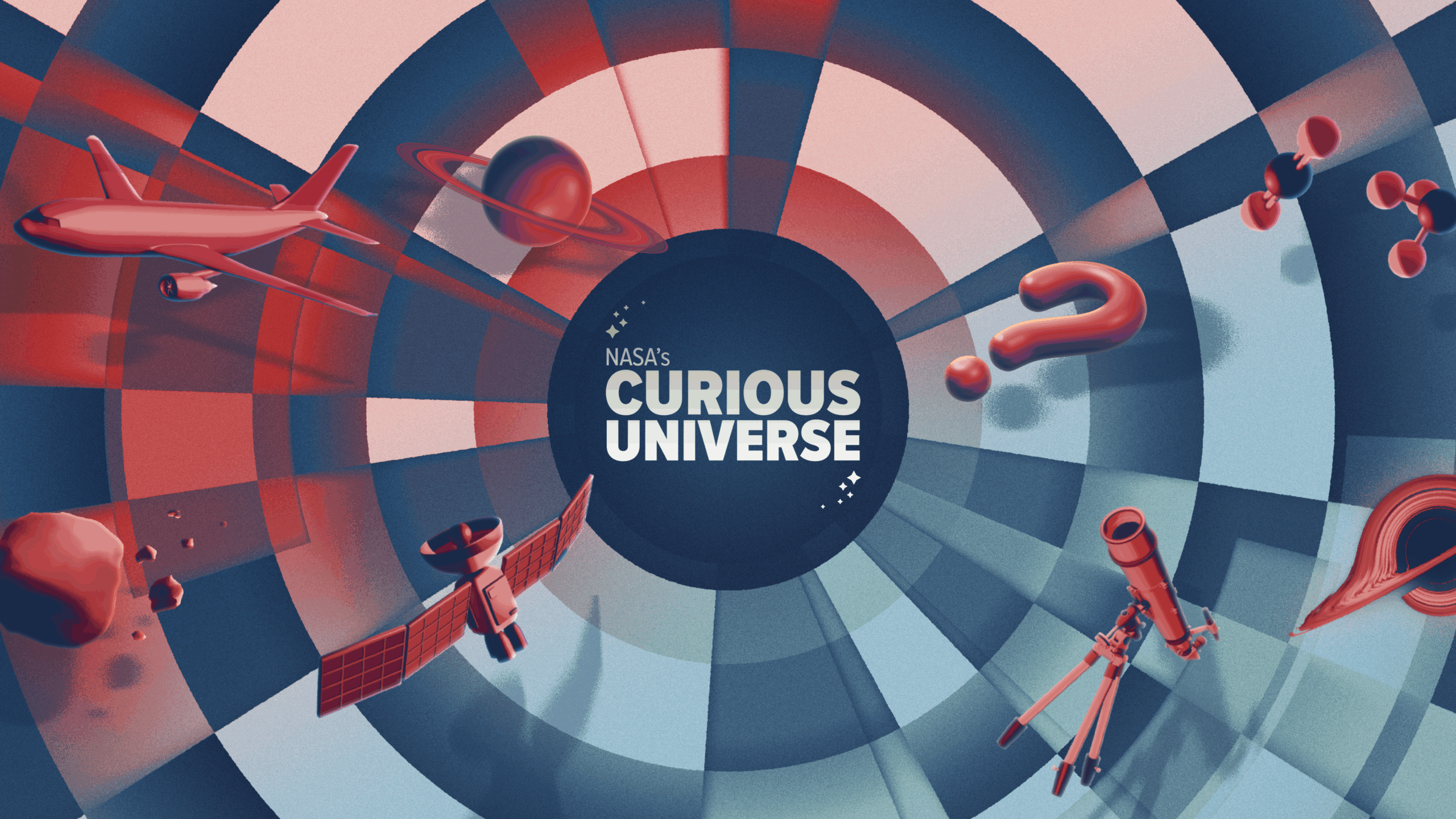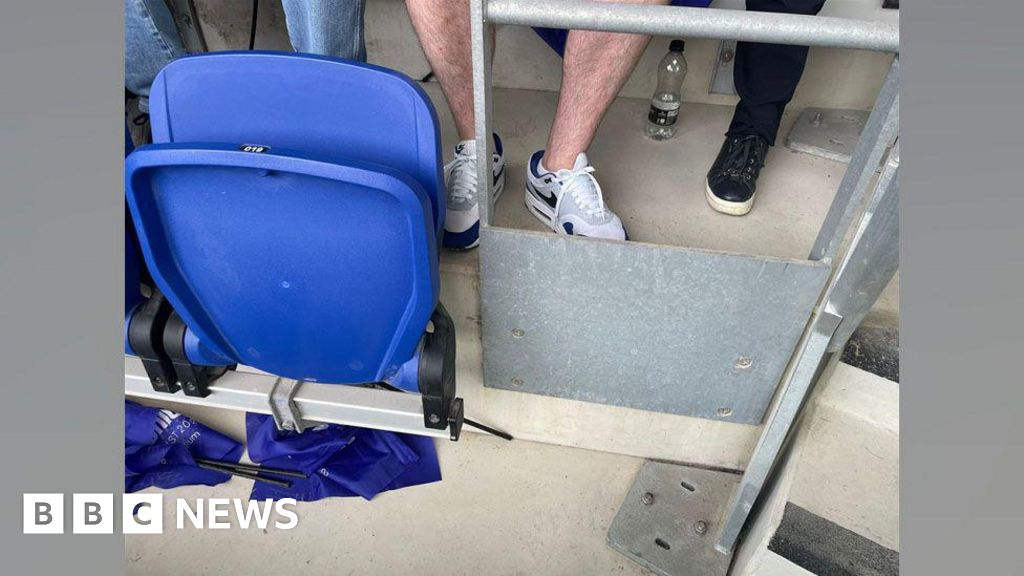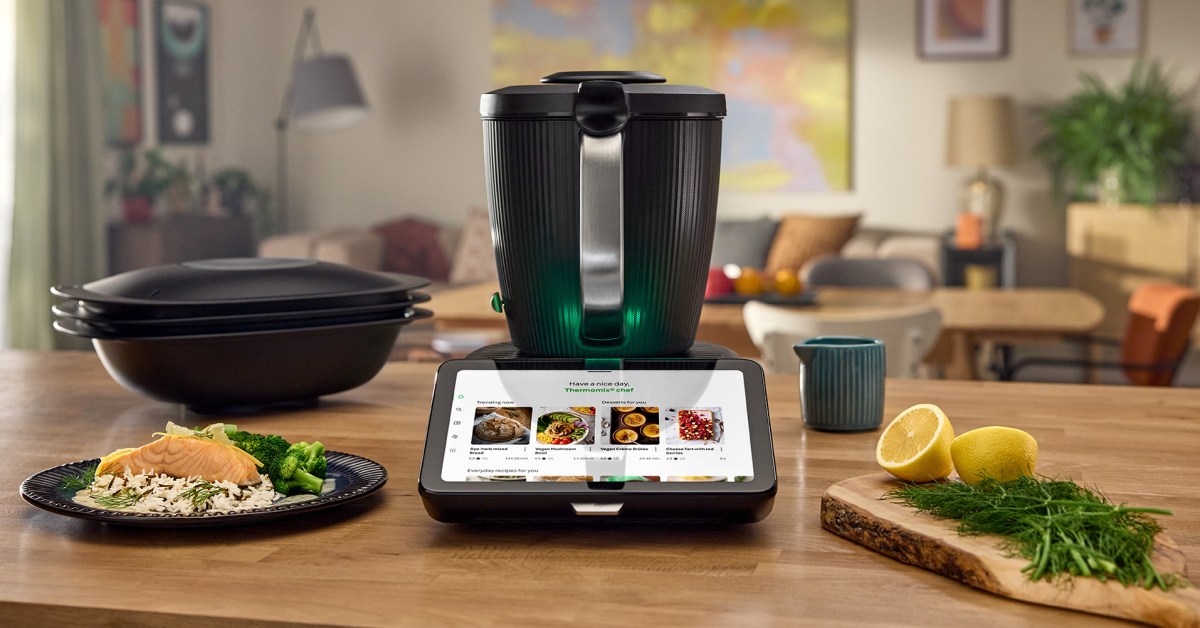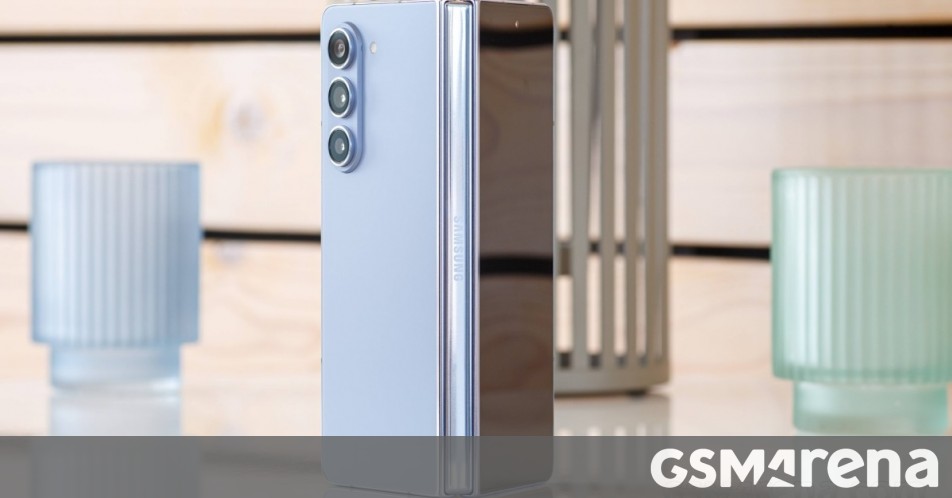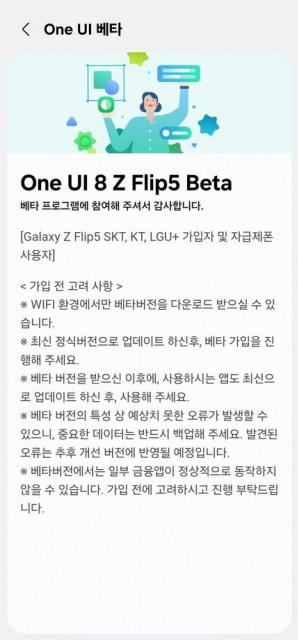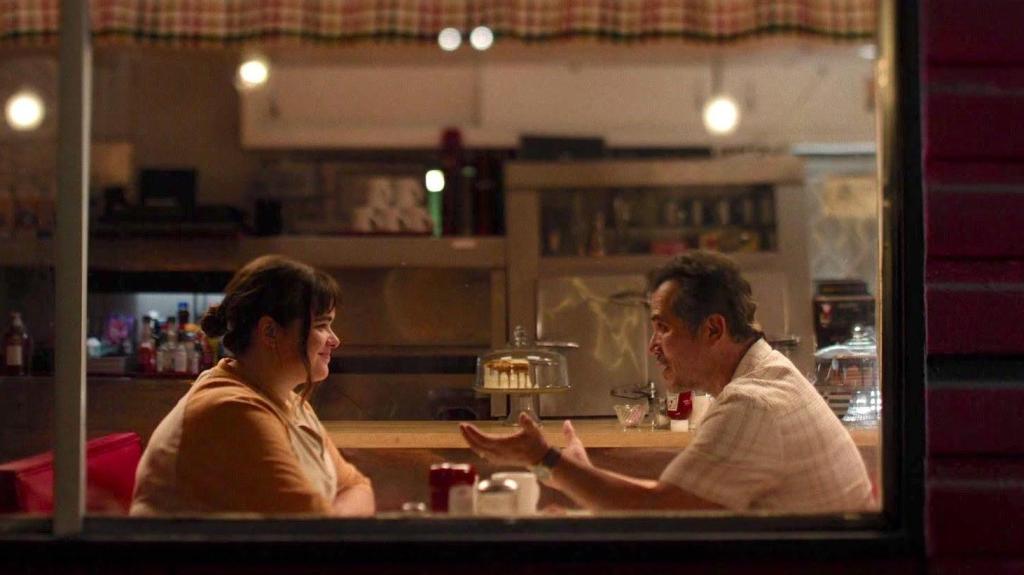Episode description:
Some exoplanets—like a gas giant with rain made of glass and 5,000-mile-per-hour winds—sound like worlds dreamed up by a science fiction writer. But they’re real. From light-years away, scientists can uncover details about planets orbiting distant stars and even ask whether some exoplanets could support life. Néstor Espinoza, an astronomer at the Space Telescope Science Institute, explains how NASA’s James Webb Space Telescope is revealing new details about exoplanets, especially rocky worlds like Earth.
[Music: Curiosity by SYSTEM Sounds]
HOST JACOB PINTER: You’re listening to NASA’s Curious Universe. I’m your host, Jacob Pinter.
Imagine a movie that starts like this:
[Muisic: Into the Void by Gage Boozan]
The camera pans up, and we see a spaceship. It’s sailing toward to an alien planet. The planet is cobalt blue, and it’s gigantic—bigger than any planet in our own solar system. It even has water vapor. But the explorers in the spaceship know they have to be careful because this planet’s atmosphere is basically blow-torched, with a rain of molten glass whipping in winds of more than 5,000 miles an hour. So the spaceship keeps flying, and as the movie continues we see other bizarre worlds.
There’s a planet that orbits a small, red star. It’s unknown if the planet has life. But if it does, that red starlight could make plants here red or purple—even black. We also glimpse a rogue planet. Somehow this one broke free from its star. It roams the galaxy alone and in perpetual darkness, never to see another sunrise.
Well, here’s the big plot twist: all of these planets are real. Hollywood didn’t make them up. They’re called exoplanets, a whole assortment of planets beyond our solar system, orbiting faraway stars.
NÉSTOR ESPINOZA: If you go outside and you just pick a random star, chances are that star has a planet orbiting around it.
JACOB: Néstor Espinoza is an astronomer at the Space Telescope Science Institute.
NÉSTOR: If they have rocky planets, do the atmospheres look like, you know, the Earth’s or Mars or Venus, or something else completely? We have no idea. We just started exploring them. It sounded science fiction up to five years ago. Now it’s science. It’s not science fiction anymore, which is pretty fun. (laughs)
[Music: Move As I Move by Jan Telegra]
JACOB: Now, these exoplanets are too far away for our spacecraft to visit. But we have tools to study them, including the James Webb Space Telescope. Webb is a huge telescope in space, a million miles from Earth, studying the cosmos in ways that we just can’t from Earth’s surface. NASA leads the international partnership that built Webb, and the Space Telescope Science Institute handles its science and operations for NASA. That means Néstor was there in Webb’s first moments, watching engineers take Webb for a test drive. Néstor planned to use Webb’s data to prove whether exoplanet science was something he could really do with this mission. And almost instantly, he got his answer from the universe.
NÉSTOR: Like, I got that answer within like 15 minutes, and it was, like a complete “Yes,” and I already knew it was going to be beyond what we were expecting. The signal was just so much better, like nothing I have ever seen. From that moment, I knew, like, this is going to make everyone crazy.
JACOB: But getting that cosmic “yes” was only the beginning. Before it launched, scientists around the world knew what Webb was supposed to be able to do. Now they were waiting to hear how it really performed. Néstor sifted through the data, making sure Webb could capture as much detail as the world hoped.
NÉSTOR: Doing exoplanet science with James Webb—it’s not that straightforward. Typically, just, you know—you want to look at a star with James Webb, point at a star, you get your data, and that’s it. With exoplanet data, you have to massage the data a little bit more in order to extract the signals that you want, because they’re very tiny signals.
JACOB: So what makes exoplanet data so tricky?
[Music: Results Take Time by Paul Richard O’Brien]
Imagine traveling far, far away from own solar system and trying to look back at Earth. From out here, the Sun is a speck—just one of many. As we try to zoom in on the Sun, we run into a problem. It’s really bright—so much brighter than Earth. There’s just no hope of seeing the faint glow of our own home planet. But there is a way we can detect it.
Whenever a planet passes in front of the Sun, the Sun would appear just a little bit dimmer. And since planets radiate their own energy, when they disappear behind the Sun, we could detect that too. That tiny bit of information may not sound like much. But with careful study, scientists can use it to figure out details like a planet’s temperature and what chemicals are in its atmosphere.
Since the first discovery of an exoplanet in the 1990s, scientists have catalogued thousands of these planets all across our galaxy. Some of them are exotic worlds in classifications like “hot Jupiters” or “sub-Neptune” gas giants. Néstor’s research focuses on rocky planets like Earth, and if you’re thinkin’ what I’m thinkin’, the next step is to ask, Could these rocky planets also show signs of life?
Now, rocky planets are smaller, and that makes them harder to study. NASA is already planning for a future telescope called the Habitable Worlds Observatory, specifically designed to hunt for signs of life. In the meantime, Néstor says Webb is giving us a lot to work with.
JACOB: It’s a big universe out there, and there’s a lot of stuff to study. What made you say, this is the thing that I want to spend my life looking at?
NÉSTOR: So from when I was a kid—I think everyone has gone through this stage in which you’re like, kind of obsessed with, like, aliens, right? Either from movies and like E.T. and stuff like that. Or Star Wars, for instance—big fan of Star Wars. I remember—I think that’s when started. My mom brought me to these—for some reason, they redid the original Star Wars movies, episodes, you know, four through six, and they put it in the movies. And my mom had only one free day in her week. She worked a lot. We were basically just my mom and I. She had one day free and the week, and she said, We’re going to spend the whole day and we’re gonna see the three episodes. I was, like, eleven.
JACOB: Back to back to back?
NÉSTOR: Back to back! It was nuts. I was like, I have no idea what this movie is about. I’ll just go. And it blew my mind too, right? This thing of seeing Tattoine with two suns. What?! This thing could exist out there? You know, planets that are covered in ice, planets that are like Earth or desert planets. And I thought that was nuts. So that really kick started the thing, like that little seed, and that just grew. I never thought I could actually be a scientist. So I come from Chile. And in Chile, I don’t know—science was not a thing that I knew one could do. From TV, I thought, There’s scientists out there, but it’s done by folks at NASA and other places. But I’m, like, very far away from that. So at some point, my physics teacher just grabbed me and she told me, “You know, I’ve seen you with these bright eyes in physics, and you like this astronomy thing a lot. You know you can be a scientist, right?” This was when I was 15, and I was like, but you—really? You can get paid for, like, doing science, for, like, discovering new things? That sounded completely nuts. It’s like someone paying you to play video games, right?
JACOB: Right.
NÉSTOR: And she was like, yeah, that’s a career, and you can study it here. And that also blew my mind. I was like, what? So that’s when I figured out that I wanted to be an astronomer. So that that was the kind of the path to science and me and the path to exoplanets: physics teachers, moms, and Star Wars.
JACOB: So, I wonder if you can fill in the blank in this sentence for me: James Webb is teaching us _____ about exoplanets.
NÉSTOR: Ooh. There’s no single word, really, because it’s revolutionizing the field, really. We are starting to see maybe the first hints of evidence of atmospheres around rocky exoplanets. That was well beyond our capabilities three years ago before the launch of James Webb. This is really the next frontier. Like, if we want to get and eventually detect life out there, the first question is, Does this rocky planet have an atmosphere or not? And we can see that in our solar system, even. So, you know, Mercury has, like, a very thin, almost non-existent atmosphere. Now that’s because it’s just too close to the sun, right? Poor planet.
JACOB: Sure. It’s getting baked all the time.
NÉSTOR: Exactly. Poor planet. You can bake a pizza in the thing if you want. But then it doesn’t have a substantial atmosphere, as you know, the one we have on Earth, the one that Venus has. And stars out there are also very different. We’re used to this beautiful Sun that we see every day, but there are stars of all sizes and colors out there. And in fact, one of the things that impresses the public I think the most is, when you ask them, “What do you think is the average star out there? How does it look like?” And everyone tells you, like, Ah, it looks like the Sun. And the answer is, no, that it’s not like the Sun. It’s actually a star that is kind of 10 percent the size of the Sun. So much smaller. That makes it much redder. And then you have to be closer to that star in order to feel the same heat, because it’s smaller, it’s colder. Just like a heater. So those stars really outnumber all the rest of the stars. Those are the majority of the stars out there. So we also know that rocky planets—actually most of the rocky planets—live around these small stars. We’re trying to explore, how does the average rocky planet out there look like, which orbits these small stars? Which is very alien. Like, if you imagine the sky on these things, it’s completely different. Like, you are used to this orange star coming up. Imagine now, like a very small star coming up. It’s red—like, very, very red. So if there’s plants or something like that, on these rocks—on these planets, they might look completely different. They might absorb completely different light. They might look completely different. So figuring out these alien worlds, it’s this exciting thing that James Webb is allowing us to do.
JACOB: The thing that the James Webb Space Telescope, I think, is the most famous for, is that it is looking back to cosmic dawn and sort of the very first galaxies and so on. And in a lot of ways, that’s what it was designed to do. So what makes those tools that it has also really useful for studying exoplanets?
NÉSTOR: That’s an excellent question. So what you do is that you wait until the planet passes in front of the star from your point of view on Earth. And when the planet passes—if you’re lucky enough to see that passage—some of the starlight passes through the atmosphere of the planet and interacts with it. And those little signals are the ones that we detect with James Webb, and we’re able to extract, like some sort of, like cosmic detective part, right, which is, see which light got absorbed by the atmosphere of the planet. What we’re trying to do is see which part of that starlight is being eaten up by the molecules in the atmosphere, and different molecules like to eat different colors of light. They have different diets. So if you want to detect sodium, for instance—you know, your classic salt—you typically go to what we call optical wavelengths, which are light that we can see. Like, you and I can see. Like the color of your shirt, the color of your pants. That’s light, colors of light that we can see. But there’s many other colors out there. In particular, James Webb is what we call an infrared telescope. So it’s able to detect light, which is called infrared light. It’s past—like way redder than the reddest you could see, that we cannot see. Our eyes just can’t detect that. In the infrared, it’s exactly where the molecules that we’re most excited about—like, you know, water; carbon dioxide, which is a big thing on the rocky planets on the solar system; methane—all of these molecules, their diets of light are based on infrared light. So if you want to detect those molecules, you have to go to the infrared, right? And that’s what makes James Webb so unique. You have this big bucket of light that is very stable, and it’s able to look at exactly the colors of light on which these very important molecules are absorbing.
JACOB: Do you think you could take me on a little tour of some of the exoplanets you study? Like, I don’t know—can we pretend that we’re visiting? And can you tell me what we see and what it even might be like to actually go there and be on the surface or be in that atmosphere or something?
NÉSTOR: Totally. Yeah, I can do that. So right now we don’t have a solid detection, but I can make a case for this. I think I’m going to put as an example case one planetary system that is very dear to my heart because I’ve been working a lot on that, and it’s called the TRAPPIST-1 system.
[Music: Designing the Future by Carl David Harms]
So in order to travel to the TRAPPIST-1 system, we have to take a rocket and travel like several tens—like a couple tens of light-years. That means that if we threw a little laser, it will take, like, 20 to 30 years to get there. So the first alien thing about this system is that the star is crazy small. The star is the size of Jupiter, which is like, What?! A star can be that small? The answer is yes, they can be that small. And this system doesn’t have, you know, one, two, or three, four rocky exoplanets going around. It has seven rocky exoplanets going around the star. The other alien thing about this system is that all these planets orbit very tightly packed together. So they are in orbits that are—in an orbit that it’s smaller than the orbit of Mercury. All these seven planets are packed in an orbit that is very, very small. The other alien part about this TRAPPIST-1 system—as I told you, seven planets. Two or three of those planets are in what we call the habitable zone of this system, which is a distance from its star, in which it’s not too hot and not too cold, such that if they had atmospheres like we have on Earth, they could sustain liquid water in their surfaces. And that’s pretty exciting, because it means, you know, maybe life is there. Even more, because the system is so tightly packed, if we, you know, we were traveling to this thing, if we were to go and land on one of these planets and you looked up in the sky, you could actually see the other planets as, like, big moons. So if you have a friend in this other habitable planet, you can call them and say, “Hey, there’s a storm coming your way in like three hours,” right? Which is nuts, right? The fact that it’s so packed means that you can see the planets in the sky, the other planets in the sky. So that would be, you know, a beautiful sight,
JACOB: Even better than Tatooine, right?
NÉSTOR: Even better! Right? So that’s the whole thing with this field. It’s like, you think you have seen cool stuff in science fiction? Wait until you see the science data, right? That’s crazy!
JACOB: This is maybe going to ask you to take your scientist hat off and put your prediction hat on. But do you think that we’ll find signs of life on an exoplanet—I don’t know, within your lifetime?
NÉSTOR: I surely hope so. Signs? Yes, I think we would be able within my lifetime, especially with what we have lined up in the future. So will we be able to detect these biosignatures within my lifetime, between like 30 years, 40 years from now? I think the answer is probably yes. Will we be able to claim unambiguously that that’s aliens, like, walking on that planet? Probably not. But that’s where our scientific community gets together to try to figure out what alternative scenarios will produce this particular signal?
JACOB: Right.
NÉSTOR: And I’m very confident that we will get to very good answers with that. Like the scientific community—once it focuses on a problem, it’s very good at figuring out how to make that happen. You just mentioned, for instance, that the James Webb Space Telescope was made basically for the deep universe, trying to figure out the first galaxies and so on. So they really thought very hard and how to make that with James Webb. That is the beauty of the Habitable Worlds Observatory. It’s the first time in history of humankind that we’re saying we’re going to build a big mission, big telescope, and this is going to be based on trying to figure out this—you know, actually get the signatures of possibilities of life out there in other planets. And that’s a very exciting—again, it’s a very exciting time to be alive, to be in this era in which we are jumping into try to figure out there’s life out there. It’s like, it’s never happened before. It’s amazing.
JACOB: I was thinking about when you said that you grew up and didn’t know that being a scientist was an option. What advice do you have for someone who is interested in science but also may not realize that that is a real career path?
NÉSTOR: Yeah. So what I would say—well, first of all that it is a real career path (laughs). It’s a thing you can do. So first thing is that there’s not a linear career path. You don’t have to be like a total genius that gets into physics, top grades, and then you go and do amazing discoveries. That’s just not how it works for the majority of us. If you have an interest and an excitement for this, that is like 60, 70 percent of the way. That is, if you’re really excited about this stuff, then this is a career path for you. It’s not going to be easy, like, I can tell you that from the very beginning, but it’s going to be totally worth it. I would also say that—and this is sometimes underlooked—that, yes, your excitement and for the science and so on is really important, but also having a support system is really important. I told you that basically it was my mom and I, and that support from my mom and from my friends and so on was key for me to going through this. I mean, if it weren’t for them, I would not be here. The final advice that I have for people that want to do science is that I know people have this concept of scientists being like these white-coated folks that are just in their own labs and the whiteboard, right? And they’re alone, lone wolves.
JACOB: Oh yeah. I’ve seen it in the movies.
NÉSTOR: Right! “Eureka! I solved cancer, whatever.” That’s not how science works. Science is a very, very collaborative environment. Like, my native language is Spanish, so I had to learn how to speak English and how to communicate effectively and so on. That is also very important. If you’re hearing all of this and you say, Wow, you have to do a lot of stuff, you can do it. If you’re excited about this stuff, you can be that scientist.
JACOB: I have one last question for you, and then we’ll get you out of here. Since our show is called Curious Universe, what are you still curious about?
NÉSTOR: Well, I’m curious about these atmospheres around rocky planets, for—in particular, if the atmospheres survived around the TRAPPIST-1 exoplanets. If they did and we find the system that it’s in the habitable zone of their stars, that has an atmosphere that we can characterize in detail, that would be such an amazing moment in humanity. Like, yes, we have this chance to figure out if life might be in this planet. That is the thing that has made me the most curious. And the overreaching kind of bigger question to that is, how frequent is life out there? The reality is that we don’t know. Maybe life is like this very rare, very niche thing that we were very lucky to have here on Earth, right? In our galaxy—in the hundreds of billions of stars in our galaxy—is there another one that has life? Not only life—intelligent life, technology out there? Is there more advanced technology out there, perhaps? That has me very, very curious. That would be one of the questions if I had, like, a genie that could answer any question that would be—give me the number, right? How many? And that will solve so many questions in my mind about the universe out there.
[Music: Exoplanet by Jeff Penny]
But the very fact that we’re talking about this—and you folks are thinking, that you’re hearing this, you’re thinking, That’s an interesting question, and that’s an interesting question that we could get answered—that is amazing. Because we are not in the realm of science fiction anymore. This is science, and we are putting telescopes out there to get these answers.
JACOB: Néstor Espinoza is an astronomer at the Space Telescope Science Institute. And I just want to give you a quick update. Since I talked to Néstor, we have a little bit more information about TRAPPIST-1, the planetary system that Néstor is really excited about. Using the Webb telescope, scientists determined that TRAPPIST 1-d—which is one of the planets in that system—does not have an Earth-like atmosphere. We’re still learning more about that planet, and the six other rocky planets orbiting the same star.
If you liked this episode, you will love NASA’s documentary Cosmic Dawn. Cosmic Dawn reveals the incredible true story of the James Webb Space Telescope with never-before-seen footage from the creation, construction, and launch of this remarkable telescope. See the film at nasa.gov/cosmicdawn.
And you can find the latest news from the Webb telescope and much more information at nasa.gov/webb.
This is NASA’s Curious Universe. This episode was written and produced by Emma Brambila. Our executive producer is Katie Konans. The Curious Universe team also includes Christian Elliott and of course, Padi Boyd. Krystofer Kim designed our show art. Our theme song was composed by Matt Russo and Andrew Santaguida of SYSTEM Sounds.
As always, if you enjoyed this episode of NASA’s Curious Universe, please let us know. Leave us a review. Share the show with a friend. And remember, you can “follow” NASA’s Curious Universe in your favorite podcast app to get a notification each time we post a new episode.
